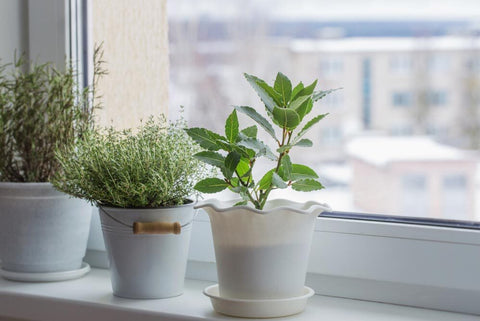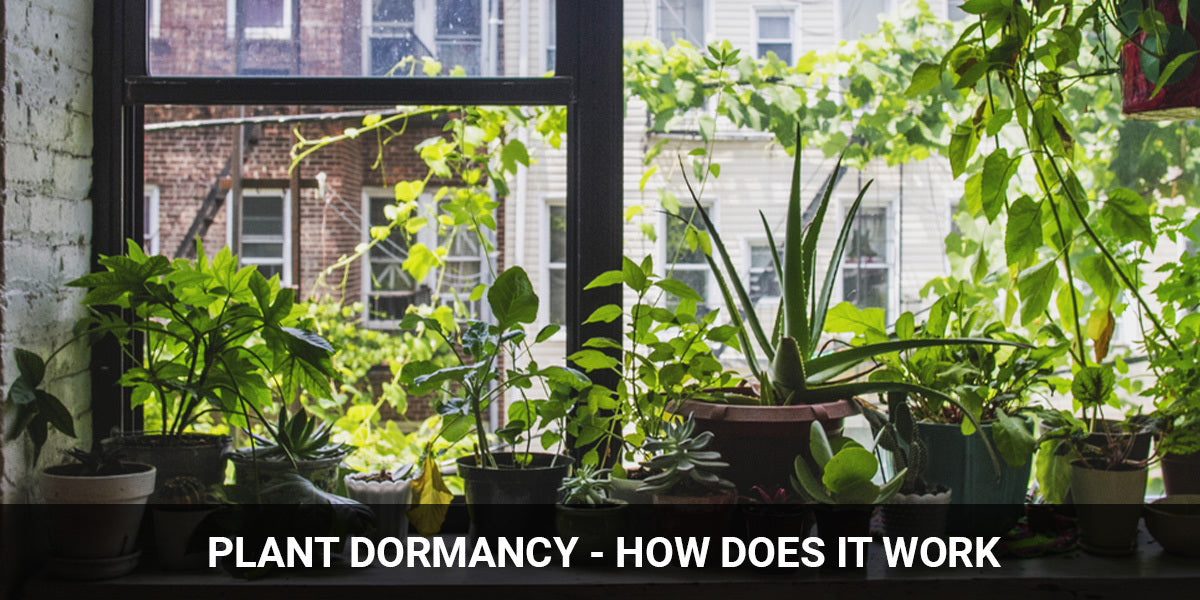How to Grow
Plant Dormancy: How It Works, Why It Matters & How to Wake Up Dormant Plant
Every year in the winter season, many animals slow down their activity and find a safe place to stay.
This is Hibernation, the survival strategy of the animals to cross through the unfriendly season.
But does this only happen in animals?
No, it also happens in plants.
Yes, plants also take the advantage of this winter season to avail the rest as much as needed.
Plants also go dormant to pass through unfavorable weather conditions for their regrowth.
Dormancy is the plant’s way of survivability in order to regrow each year.
Plant Dormancy

Plant dormancy is a period of seized plant growth. Dormancy is an approach that plants exhibit to survive. Just like us plants are also affected by the adverse weather conditions that winter brings. Due to the lower, freezing temperature, dry weather, shorter day length, and low humidity plants exhibit signs of little growth or no growth. Instead of using their energy to grow, plants seize their growth and development to retain energy to regrow until the favorable weather returns.
Why do plants undergo dormancy in winter?
Sunlight and temperature are the two main factors that influence the growth of plants. The sunny weather of summer provides the required amount of light and temperature, but the weather of the winter season is totally different, it’s not like summer.
In winter, the sun travels through the shortest path hence the days are shorter and the nights are longer. As the daylight reduces, so does the growth of the plants. This is an indication that your plants are heading towards dormancy.
If the plants continue to grow in winter, the water stored in their parts would freeze and can cause damage. In addition to all these, the frozen water in the ground, making it difficult for plants to collect water and to meet their requirements during cold weather. So the plants go dormant, there they put a stop to their active growth and conserve that energy to regrow until the desirable weather returns.
How does plant dormancy work?
During winter, each plant is transformed differently. Whatever the plants do in winter, it is their approach to survive in unfavorable weather conditions. Signs of dormancy vary from plant to plant.



- Some plants shed their leaves to retain the water they had stored during summer
- As the sunlight and temperature drop during winter, lawns eventually stops growth and turn brown
- As the weather conditions are not optimal at this time, seeds may stay weeks or months away from germination
Is it necessary to make plants go dormant?
Almost all plants undergo dormancy on their own as this is very crucial for their survivability during winter. But the annuals are exceptions here, as they complete their lifecycle within a year, they don’t undergo dormancy. So, normally it is not necessary to make it manually in the case of outdoor perennial plants. But some potted and indoor perennials may need your help.
Most of the plant’s growth will start to decline as the cooler temperature approaches during winter and they enter into a dormancy state. In the case of houseplants, it may help if you move them to cooler and darker places of your home. Darker and cooler places allow them to go dormant.
Some outdoor potted plants need to be moved indoors during winter to make them go dormant according to their types and climatic requirements. Before bringing them indoors, acclimating them to the environmental changes is very important as the light and humidity vary between outdoors and indoors.
How to acclimate your houseplants?
In the initial days of acclimatization, bring your plants indoors in the evening and move them back outdoors in the morning for a few days. Gradually allow them to spend more time indoors overtime during this process.
How to know if the houseplants are dormant?
Sometimes you may fail to find out whether your houseplants are actually dormant or dying. So, if you are not sure then it is better to know them thoroughly with some set of tests.
There are 3 simple tests, through them, you can find out about the dormancy of plants easily.
Snap test

Select the end of a branch or a stem of your houseplant about 9 - 10 cm in length, then hold that part and bend it back sharply. If it’s dead, it will snap easily without putting much pressure, and the inside portion will be dry.
If it’s alive and under dormancy then the selected branch or a stem bends easily and after it splits into two pieces, you will see the green and moist portion inside.
Scratch test

Select a branch on a young stem and scratch the surface of the bark either by using a knife or by your fingernail. If the inside portion is green, then it’s alive and it’s under dormancy, if not continue the process down to the stem. If you see a brown at each scratched portion, then consider it is dead.
Inspection of roots

Sometimes a dormant plant looks dull and dead above the soil surface, but it will have healthy roots inside. Try to remove the plants from their pots and check whether the roots are healthy or rotten and shriveled up.
How to care for dormant plants in winter?
Knowing what to do and what not to do for your dormant plants in winter is very important. You need to change some of your plant care routines in winter to prepare them for spring.
Pause repotting
Avoid repotting your houseplants during winter. As the plants are dormant in winters, they may not recover quickly.
Avoid fertilizing
As the plants are in the resting phase in winter, they focus on living with what they have. If we provide extra food to the plants, they will not use it and it can disturb their natural growth cycle. So it is better to avoid fertilizing them.


Reduce watering
Winter means the shorter length and the shorter day length means a lower rate of photosynthesis. Plants need much water during their active growth but not here. So, instead of watering blindly, do check how the soil feels. If it is moist, do wait for a couple of days to give water. But when you water, water the plant thoroughly.
Mulching
Mulching can help to retain the moisture in the soil. It prevents moisture from evaporation and thus helps in keeping the soil moist even in the dry season. Mulching also helps to prevent damage to the roots due to the cold weather of winter.


Keep your plants away from heaters
If you reside in a place where winter temperatures fall below 15°C, then move your plants away from the direct air draft from heaters and windows.
Move your plants together to create warmthTo create a humid microclimate, move your plants together out of the direct cold and dry winds. This helps your plants to stay warm and humid.
Do check for any pestsAs the plants are in lower humidity levels, the leaves become the best resident site for many pests. So do check for the pests such as spider mites, aphids, and scales underside of the leaves. If you find any wipe them off or spray neem oil.
How to Retrieve a dormant plant?

Plants can take a couple of days or weeks to come out of dormancy after winter. In spring, they start new growth. To retrieve the dormant plants, you can bring back them to the place of indirect sunlight, water them thoroughly and fertilize them to boost their new growth. If you are going to keep the outdoor potted plants back to their places, then wait until the freezing temperature or frost got over.
In winter it is very normal to notice so many changes in your plants. But don’t worry, they are just exhibiting their strategy to pass through this cold weather and are preparing themselves to grow again. A little bit of your care can do a lot for your plants to stay happy and humid in their resting period.
FAQs on Dormant Plants
1. What is plant dormancy?
Dormancy is a state of seized plant growth in winter. In unfriendly weather conditions, plants seize their growth and development to conserve their energy instead of exerting it to grow, until the favorable weather returns.
2. Why do plants go dormant in winter?
We all know that sunlight is ideal for every plant’s growth. But in winter the days are shorter and the nights are longer, hence the daylight reduces. In this situation, if the plants continue their growth, the stored water would freeze and can harm the plants. So they go dormant in winter.
3. What triggers dormancy in plants?
In winter the days are shorter and nights are longer as the sun travels through the shortest path. A shorter day length results in reduced sunlight. Reduced daylight and the cooler temperature of the winter are the two factors that trigger the dormancy of plants.
4. Do all plants go dormant?
As the resting period is very crucial for plants’ survivability during winter and to regrow, almost all plants go dormant irrespective of outdoors or indoors. But annuals don’t go dormant, because these are capable of growing only for a single season.
5. How can we tell if the plant is dormant?
- You can check by bending an end of a branch or a stem of the plant if it snaps easily and the inside portion is dry, then consider the plant is dead. If it’s alive, then the branch will bend easily and split into pieces. There you will see the green and moist portion.
- Scratch the surface of the bark of the selected young stem. If the inside portion is green, then the plant is alive. If not continue the process down to the stem. If you find a brown and dry portion then consider it is dead.
- Remove the plants from their container and do check the roots, whether they are healthy or rotten and shriveled. Because sometimes even a dormant plant looks dull above the surface.
Dormant plants do not need frequent watering as they don’t show active growth during their dormancy. So avoid watering blindly and do check for the moisture level of the soil, if it’s dry then water the soil thoroughly, if it is not avoid watering.
7. Should we feed/fertilize the plants during their dormancy?
Fertilizing the plants during their dormancy is not a good idea. In winter most plants seize their growth and they don’t show any active growth. So they don’t need extra food.
8. Are hibernation and dormancy the same?
Plant dormancy is the resting period of the plants in winter. There the plants seize their growth to cross through the adverse and unfavorable weather conditions.
Whereas hibernation is an inactive state, there the animals slow down their metabolic activity to save energy and survive by eating less as the food is scarce in winter.
9. What happens to the plants when they enter dormancy?
Some plants will slow down their growth, some will stop their growth and blooming when they enter dormancy. Leaves of the dormant plant may turn yellow and they may droop.
Popular Searches: Garden Accessories for Sale, Compost Bin India, Plastic Flower Pots Online, Contemporary Plant Pots, Hanging Pots Online, Colorful Plant Pots, Bird Feeders Online, Rectangular Planters Online, Small Pots Online, Flower Pots Online, Kitchen Waste Compost Bin, Balcony Railing Planter, Buy Pots Online, Indoor Plant Pots, Metal Flower Pot



